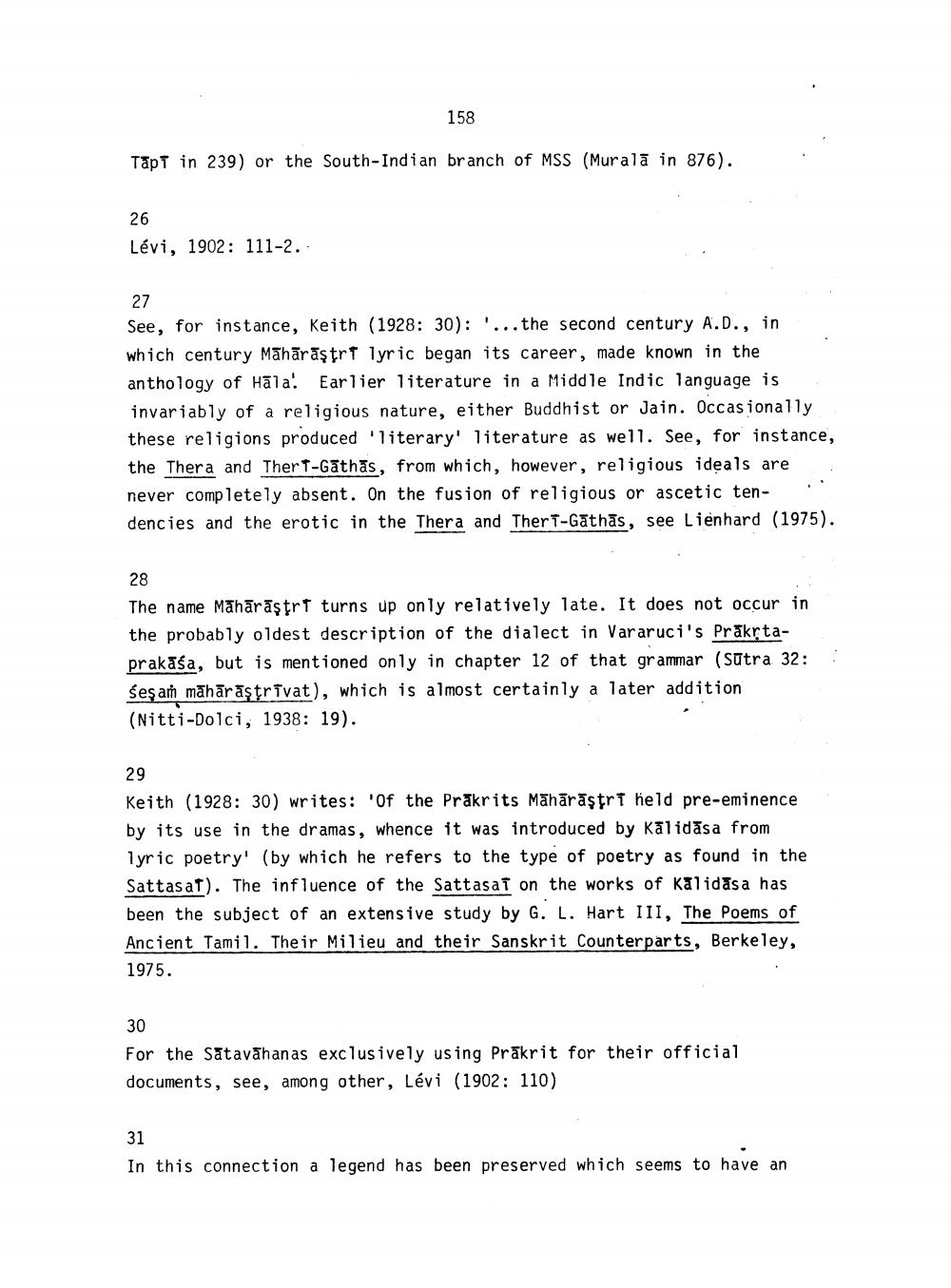________________
158
Tāpt in 239) or the South Indian branch of MSS (Murală in 876).
26
Lévi, 1902: 111-2.
27
See, for instance, Keith (1928: 30): '... the second century A.D., in which century Māhāraştrt lyric began its career, made known in the anthology of Hāla: Earlier literature in a Middle Indic language is invariably of a religious nature, either Buddhist or Jain. Occasionally these religions produced 'literary' literature as well. See, for instance, the Thera and Ther T-Gathās, from which, however, religious ideals are never completely absent. On the fusion of religious or ascetic tendencies and the erotic in the Thera and TherT-Gathās, see Lienhard (1975).
28 The name Mahārāştrt turns up only relatively late. It does not occur in the probably oldest description of the dialect in Vararuci's Prakrtaprakāśa, but is mentioned only in chapter 12 of that grammar (sutra 32: śeş am māhārāştrivat), which is almost certainly a later addition (Nitti-Dolci, 1938: 19).
29
Keith (1928: 30) writes: 'Of the Prākrits Māhārastrt held pre-eminence by its use in the dramas, whence it was introduced by Kalidasa from lyric poetry' (by which he refers to the type of poetry as found in the Sattasaf). The influence of the Sattasas on the works of Kalidasa has been the subject of an extensive study by G. L. Hart III, The Poems of Ancient Tamil. Their Milieu and their Sanskrit Counterparts, Berkeley, 1975.
30
For the Satavahanas exclusively using Prākrit for their official documents, see, among other, Lévi (1902: 110)
31
In this connection a legend has been preserved which seems to have an




